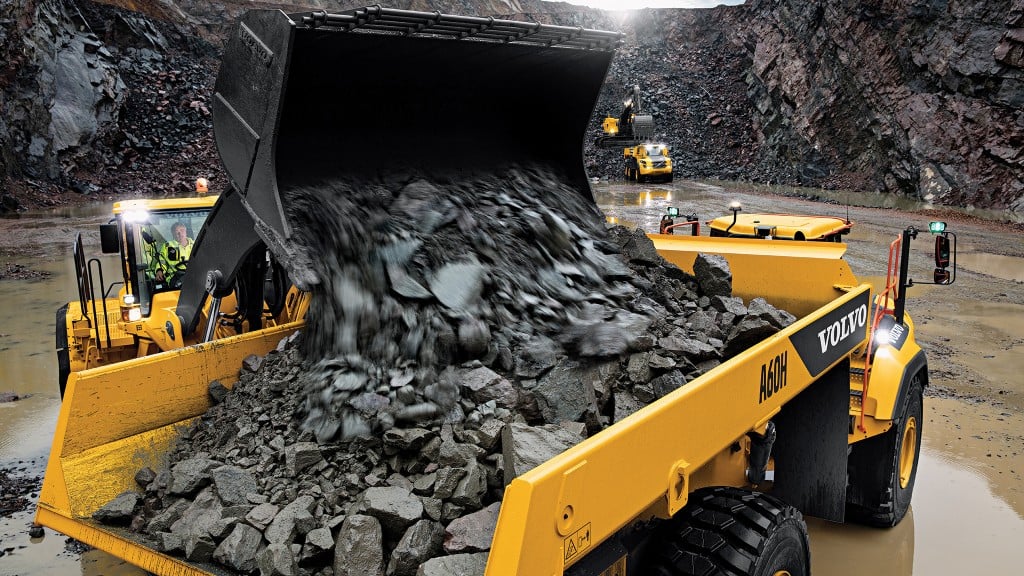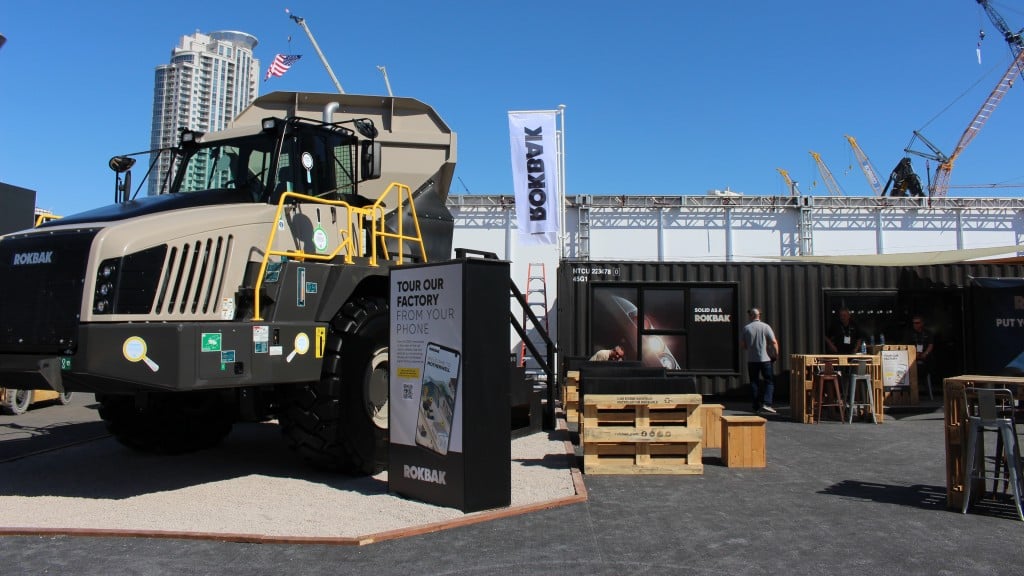5 ways to pick the right hauler to maximize productivity and profit
Increasing efficiency through pairing articulated haulers and excavators

Most fleet managers and equipment owners understand the importance of right-sizing their machines to work together at their maximum potential. This decision is especially crucial for pairing articulated haulers and excavators because, if they are mismatched, you'll be inefficient and burn extra fuel.
What's not always understood is the best way to go about this. So, if you happen to be in the market for a hauler or you're simply wondering whether your machines are properly matched, here are five ways to ensure that you're getting the right machines and are using them to their full potential.
1. Let technology help
There are some great tools out there that can help you size and pair machines depending on your unique situation. At Volvo, for example, we use our Site Simulation tool to look at factors like the haul roads, total yardage, time constraints, and the type of material being moved. We then use that information to right-size the truck to the loading tool to increase efficiency on the job. Some customers already know what they want, but we can help steer them further in the right direction. For example, if one larger hauler can match or even increase production over two smaller ones, you can potentially reduce your fleet size, optimize your workforce, and so on.
Construction calculators can also help uncover costs and savings you may not realize up front. Some OEMs have proprietary sales tools they use alongside their dealers. These can calculate the TCO of a machine, allow customers to select different specs (e.g., buckets, boom configuration), calculate fuel consumption and the number of passes to fill a hauler, and more.
2. Put good data in, get good info out
Whether you use those specific tools or prefer to solve the equation a different way, it's important to have the best inputs possible. A few important data points to know:
- Job duration: If you have a job that's a few months or less, it's not practical to move a 60-ton haul truck to that site because it has to be hauled on a beam trailer instead of a lowboy, adding to your transport logistics and costs.
- Transport: Different regions have different hauling laws. If you're transporting across regions or are trying to avoid extra permitting, smaller haul trucks are the way to go.
- Hills and grades: If you're operating in hills or on steep grades, a mid-sized hauler in the 40-ton range will typically outproduce a 60-ton hauler. That's not to say a 60-ton machine can't handle the grades – it just might not be your best bet depending on what you're hauling and how long your routes are.
- Underfoot conditions: For rough-terrain sites, a hauler with full hydraulic suspension or front hydraulic suspension will give you the smoothest ride and reduce the level of maintenance required for your haul roads. More productive operators and lower job site maintenance costs can earn you higher profits over the long term.
- Material density and weight: If you're moving a fine, light material like wood chips over long haul roads, a hauler with sideboards or even a light-material body may be ideal for moving as much volume as possible. With large rock, on the other hand, there will be voids in the load but the density will be greater, so it will take less volume to reach the truck's max tonnage.
- Cycles: If your haul roads are short, a 25- to 45-ton truck will likely be more productive because it's faster and nimbler. But if you have a long haul road, a 60-ton machine hauling more volume would likely be more productive.
3. Look beyond the sticker price
Your upfront cost, whether for purchase, rent, or lease, is just one of the factors to consider in hauler shopping. What it really comes down to is what you spend versus what you make while that truck is in your fleet – and productivity can make or break that profitability.
Moving more tons per day and doing it efficiently means you can make more money from your machine over time. Lower-cost machines may seem appealing at first glance, but they can quickly empty your pockets with excessive downtime, maintenance costs, lower resale values, and more.
Keep in mind things like cycle times, ability to dump easier and more quickly (aka higher pivot points), fuel efficiency, properly matched components, maintenance, and operator training. A lot of seemingly small factors like these can add up over time.
4. Make smart choices for today and tomorrow
Bidding is tougher than ever, and profit margins are razor thin. You can't mix and match equipment just to win a job. If you plan to use haulers to move large amounts of similar materials long term, it might be more cost-effective to right-size the equipment you currently operate versus renting something else. The efficiencies you'll gain in production over time versus multiple years of rental fees are usually worth the investment.
If you're running older equipment, those machines likely burn more fuel and don't have the faster cycle times that new equipment has. Saving even two gallons per hour can equate to thousands of dollars over the course of a year, and faster cycle times can help you load significantly more tons per hour. The efficiencies in newer machines help you move more material, which helps ensure that you're properly outfitted for more bids – and for the ones you win, you'll have the best shot at getting the jobs done for less.
If you're going after a big project, you may think you need a big hauler or excavator for the job, but be aware that bigger machines also come with higher operating costs – more fuel, more expensive parts, and so on. Hauling large machines around also costs more.
5. Use the machines properly
Once you have your haulers and excavators sized correctly, here are some tips to help you get the most out of them:
For the fastest cycle times, the most efficient way to load a truck is side loading. Don't waste time, fuel and money backing in and maneuvering your trucks. If you can set up your site to side-load, you'll have faster cycle times and lower operating costs over time. Operator settings may also help by allowing your excavator to lift quickly and swing slowly to get over a truck, for example.
When loading the bucket, make sure good, heaped loads go in the truck and utilize the bed as much as possible. It's best practice to evenly distribute the load across the bed. You want to feather the material into the truck – not just dump it in. When you feather it, it won't have that "splat" effect that usually leads to material sticking to the bed. This is especially true in sticky clay situations.
Configure your excavators appropriately with boom and arm options. Some customers prefer a longer reach, while others want as big a bucket as possible to load more material, requiring a shorter boom and shorter arm. The most popular compromise between reach and the bigger bucket approach is a standard boom and short arm. Obviously, there's give and take with different configurations, so it's important to configure your excavator for the type of work you're doing, then make sure your haul trucks are appropriately matched.
Use on-board weighing scales to improve accuracy. At Volvo, on-board weighing is standard on all new ADT models. Scales aren't always standard, though, so be sure to ask your dealer. These scales help operators see each loading cycle, often including lights on the machine that indicate whether to put more material in the bed. Anywhere from 95 to 110 percent of the bed capacity is considered a perfect load.
Look for additional productivity-boosting functions like the ability to skip gears to optimize performance and fuel burn. At Volvo, we also have a feature called OptiShift, which includes a lock-up torque converter and Reverse By Braking, where an operator can shift the truck between forward and reverse without removing their foot from the throttle. When shifting, the transmission will shift to neutral and how much throttle the operator applies will determine the amount of brake force that will be applied. But once the truck hits zero mph, it will shift to the opposite gear.
Working with an OEM and dealer who have parts on hand and can react quickly is critical. Your support will be even faster if you use telematics systems to diagnose and take care of problems before they become catastrophic issues.
As you can see, there is more that goes into a hauler purchase, rental, or lease than you might have thought. But if you have the right information, talk through the details with your dealer, and use the machines properly, the time spent on making the right decision will pay dividends well into the future.
Tyler Smith is a product manager for articulated haulers at Volvo Construction Equipment. He has been with the OEM since 2017 and has experience in operator training and field service.



